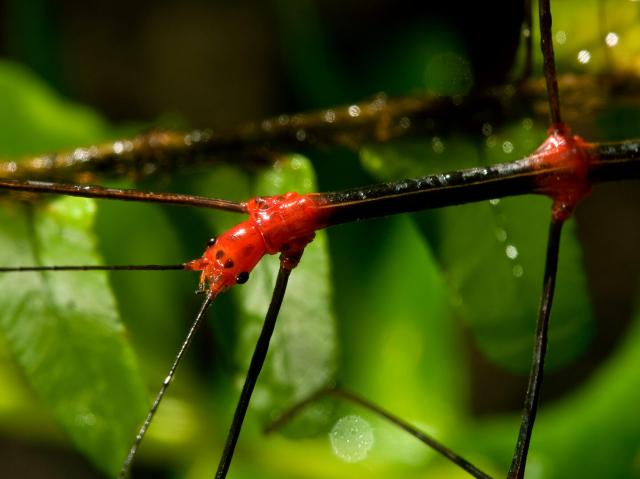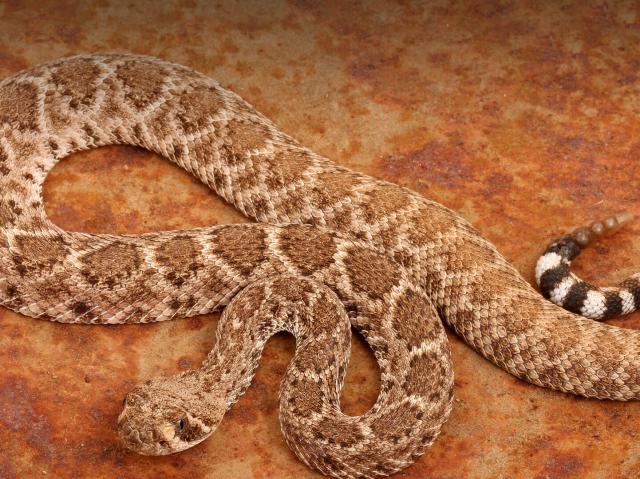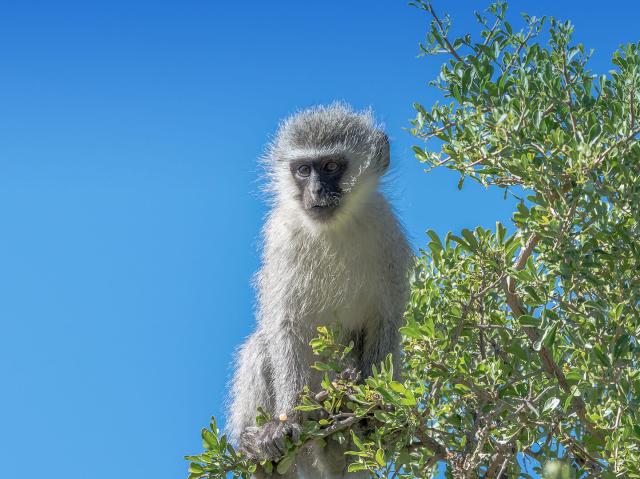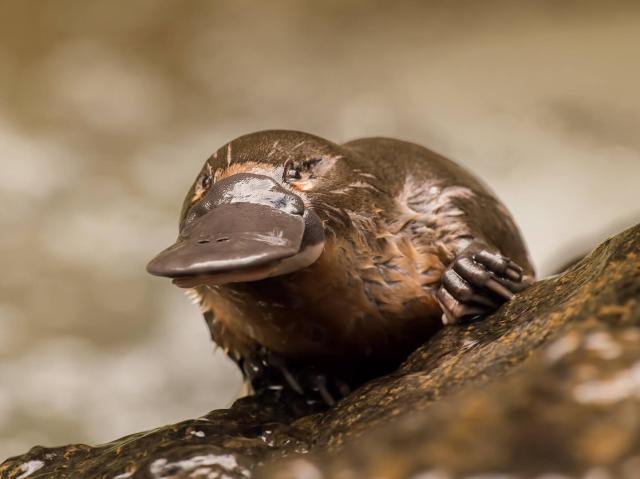
Slender-snouted Crocodile

- CLASS: Reptilia (Reptiles)
- ORDER: Crocodylia
- FAMILY: Crocodylyidae
- GENUS: Mecistops
- SPECIES: cataphractus

ABOUT
You never see it coming: Built for stealth, the slender-snouted crocodile is an effective aquatic predator. With coloration that varies from brown to a grayish green, sometimes with black splotches, this crocodile is perfectly hidden in its watery home. Even its underside, with its creamy yellow color, makes it hard for potential prey swimming below the croc to see it coming.
Like most crocs, the slender-snouted crocodile has excellent senses of sight, smell, and hearing. Also like other crocodiles, the slender-snouted croc’s nose, eyes, and ears all line up along the top of its head. This way, it can rest almost completely submerged in the water but still be able to see, smell, and hear everything going on above the surface.
HABITAT AND DIET
Slender-snouted crocodiles are unique members of the crocodilian family. They are from the deep forest areas of central and western Africa and are somewhat shy and secretive. Its trademark, and the reason for its name, is its long, slender snout. Inside its mouth are 64 to 70 meat-tearing teeth. This lighter, more narrow snout is perfect for snatching the croc’s favorite food: fish. The unique snout (mouth and nose combined) can act like a pair of tweezers and allows the crocodile to remove prey from holes and small crevices.
Rows of protective scales running down its neck and back also set the slender-snouted crocodile apart from other crocodilians. Most crocs just have two rows of the scales; this croc has three, or often four.
Though usually found in freshwater rivers, the slender-snouted crocodile is also occasionally found in lakes and even somewhat salty waters along the coast. This suggests that the slender-snouted croc displays at least a reasonable tolerance to salt water—a most effective adaptation that allows the croc to travel to more food sources. Yet although an excellent swimmer, the croc often rests on land or on the branches of partially submerged trees.
Looming, lurking, waiting, the slender-snouted crocodile cruises for a meal, looking like a harmless log. Then with a swish and a chomp, the croc makes its move, and it’s fish for dinner! To hunt, the croc swims parallel to the riverbank, curving its tail to trap fish in the shallows.
In addition to fish, the slender-snouted crocodile might also eat small aquatic invertebrates, such as shrimp or crabs, as well as frogs and snakes. And, like other crocodiles, the slender-snouted croc often takes advantage of an opportunity to eat larger prey that come to the water to drink.
At the San Diego Zoo, the slender-snouted crocodiles are offered fish, mice, and rats.
FAMILY LIFE
Are you my mother? The adult slender-snouted crocodile is solitary for most of the year, except in February and March when searching for a mate. In April, an expectant mother crocodile builds a nest made of wet forest vegetation on the riverbank, where her hatchlings will be protected. As the vegetation decays, it heats up the nest like a compost pile and helps keep the eggs warm. The adult female is generally considered to be a very good mother to her offspring; as her eggs incubate, she is never far away from the nest.
In July, when the babies begin to hatch from their eggs, they emit a chirping sound as if to say, “Hey, Mom! I could use a little help here!” The mother crocodile gently uses her teeth to help her babies chip out of their shells. Eggs usually hatch during the rainy season.
Slender-snouted crocodile hatchlings are able to head out into the surrounding flooded forest habitat soon after breaking free from their egg. Youngsters prey on invertebrates like insects. The mother keeps a protective watch over her young until they are old enough to live on their own.
CONSERVATION
The population of slender-snouted crocs is dwindling, mostly due to hunting for their meat and skin to make leather products such as shoes, belts, purses, and more. The endangered crocs are also losing more of their habitat as people move into their areas, and the increase of humans fishing for the same food that the crocs eat has caused problems for the crocs as well. Because we still know so little about these crocs, more studies need to be done to learn what can be done to help them.
By supporting San Diego Zoo Wildlife Alliance, you are our ally in saving and protecting wildlife worldwide.And you can help all crocodilians by not buying products made from their skin. We think you'll agree the skin looks much better on the crocodile!
LIFE SPAN
50+ years
YOUNG
Number of eggs laid: 13 to 27
Incubation period: 90 to 100 days
Age of maturity: 10 to 15 years
SIZE
Length: 10 to 13 feet (3 to 4 meters)
Weight: Up to 500 pounds (230 kilograms)
FUN FACTS
Slender-snouted crocodiles are one of the crocodilians known to climb trees.
The slender-snouted crocodile’s species name cataphractus means "pebble worm, clad in armor."
Do you know where the expression "to cry crocodile tears" came from? Crocs do "cry," but not because they are sad—they do it to get rid of excess salt.










